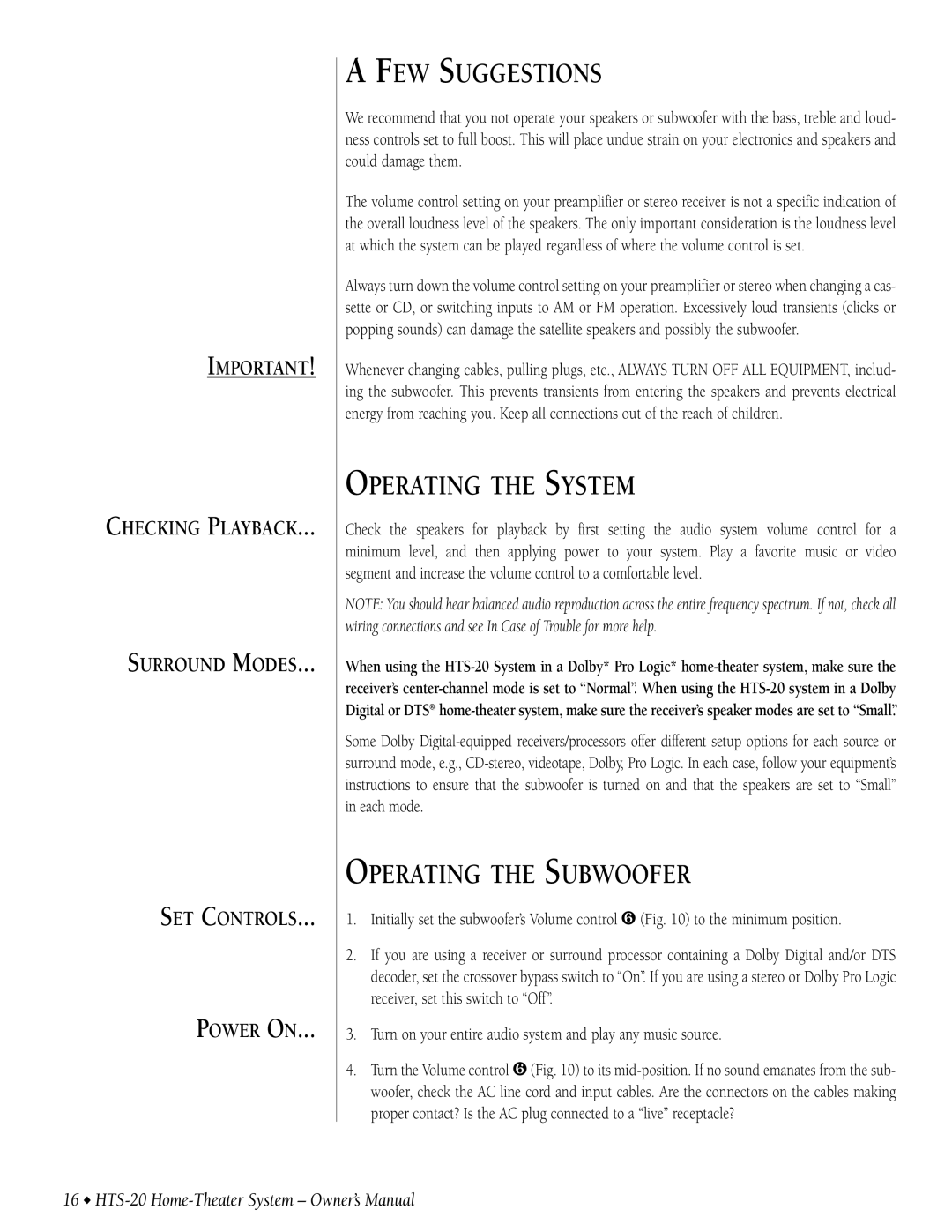IMPORTANT!
CHECKING PLAYBACK...
SURROUND MODES...
SET CONTROLS...
POWER ON...
A FEW SUGGESTIONS
We recommend that you not operate your speakers or subwoofer with the bass, treble and loud- ness controls set to full boost. This will place undue strain on your electronics and speakers and could damage them.
The volume control setting on your preamplifier or stereo receiver is not a specific indication of the overall loudness level of the speakers. The only important consideration is the loudness level at which the system can be played regardless of where the volume control is set.
Always turn down the volume control setting on your preamplifier or stereo when changing a cas- sette or CD, or switching inputs to AM or FM operation. Excessively loud transients (clicks or popping sounds) can damage the satellite speakers and possibly the subwoofer.
Whenever changing cables, pulling plugs, etc., ALWAYS TURN OFF ALL EQUIPMENT, includ- ing the subwoofer. This prevents transients from entering the speakers and prevents electrical energy from reaching you. Keep all connections out of the reach of children.
OPERATING THE SYSTEM
Check the speakers for playback by first setting the audio system volume control for a minimum level, and then applying power to your system. Play a favorite music or video segment and increase the volume control to a comfortable level.
NOTE: You should hear balanced audio reproduction across the entire frequency spectrum. If not, check all wiring connections and see In Case of Trouble for more help.
When using the
Some Dolby
OPERATING THE SUBWOOFER
1.Initially set the subwoofer’s Volume control ❻ (Fig. 10) to the minimum position.
2.If you are using a receiver or surround processor containing a Dolby Digital and/or DTS decoder, set the crossover bypass switch to “On”. If you are using a stereo or Dolby Pro Logic receiver, set this switch to “Off ”.
3.Turn on your entire audio system and play any music source.
4.Turn the Volume control ❻ (Fig. 10) to its
16 ◆
